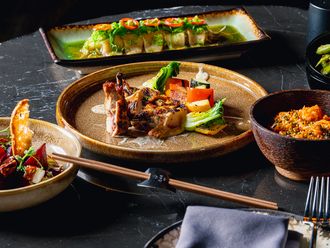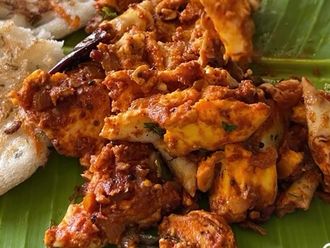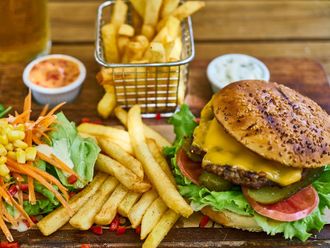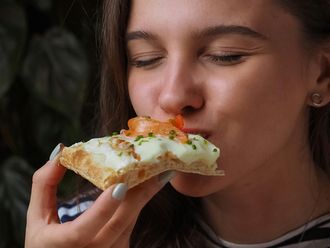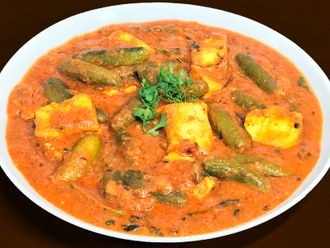
Dubai: It was Friday, the day I had been waiting for. After a quick shower, I threw on an old white T-shirt and ran to the living room, where my mother and father were busy with the pooja (Hindu prayer ritual). Fifteen minutes and a laddoo (a spherical sweet prepared using gram flour, sugar and clarified butter) later, I was ready for my favourite festival, Holi - the Indian festival of colours.
This was the year 2002, I was 14 years old, and we had just moved into a new neighbourhood in Noida, a suburb of the National Capital Region (NCR) of Delhi, India. My new friends had invited me over to their house to join them in throwing water balloons, some filled with coloured water, from their balcony on the 10th floor, at passersby.
That is, of course, enough to offend anyone. But, in India, on Holi, you can’t get offended. Why? Because, “Bura na mano, Holi hai…” (Don’t get offended, it’s Holi). By the end of the festival, our clothes and faces would be coated with colours - pink, blue, orange, green and our tummies full of sweets, snacks and food. It was the one day when adults would not stop you from overeating.
Food is at the heart of this festival. Families come together to greet each other with gujiyas (deep-fried sweet dumplings) and mithai (sweets). Old recipes are unearthed, and families get together in preparations for the festival many days in advance.
Every Indian state has its traditional Holi recipe. You have gujiya (sweet dumplings) from Rajasthan, katachi amti (sweet, spicy and tangy lentil recipe) from Maharashtra and the star drink - thandai (a cold and spiced milk-based drink, where the syrup is made from peppercorns, almonds, fennel seeds, cardamom, rose and saffron) from the East and North of India.
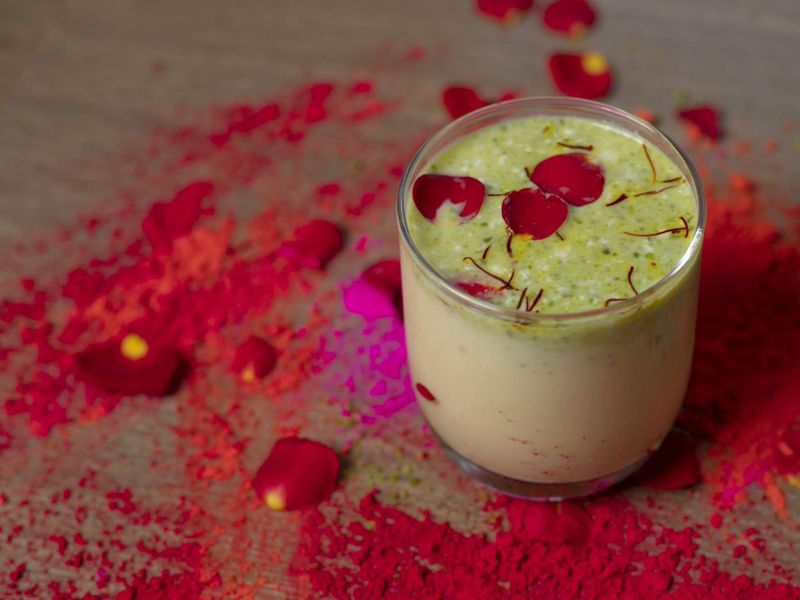
Holi culinary traditions are unique, and many Indian expatriates preserve them in their own way. Gulf News Food team spoke to the Indian expatriate community in the UAE, who are ushering in the festivities with food recipes from their childhood.
Forty-three-year-old blogger and event planner from the Indian state of Punjab, Jyoti Watchmaker celebrates Holi with a lot of food, fun and laughter with her family and friends in Dubai. She hosts dinner and has a potluck lined up for Holi this year. Apart from recreating classic sweet and savoury dishes, she has a fusion sweet dish lined up called thandai milk cake. Watchmaker said: “I have always liked to combine different flavours, which led to this fusion, and I ended up making thandai flavoured milk cakes.” Milk cakes are sweet, fudge-like bites made with solidified milk, sugar, ghee or clarified butter.
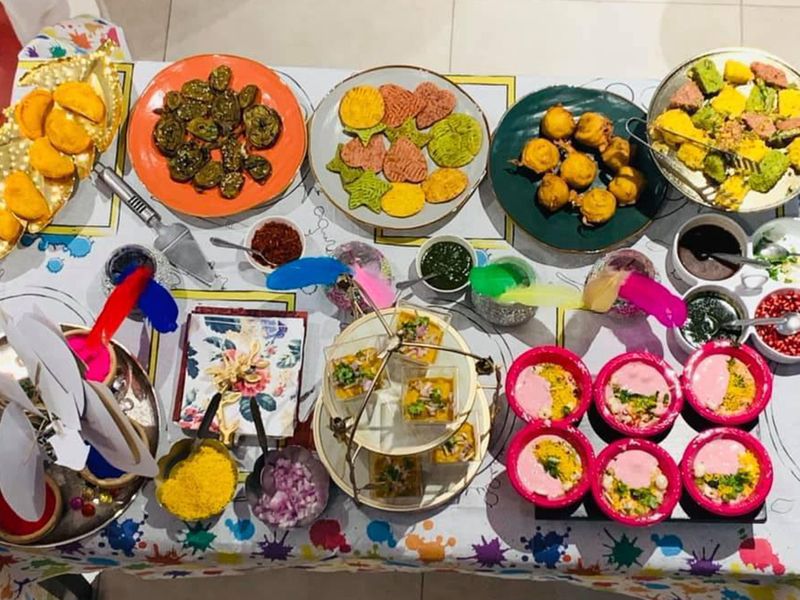
Like the colourful festival, Watchmaker likes to add colours to her dishes. Why just play with colours when you can eat them too. She uses natural colours such as beetroot powder and juice to make a Sindhi dish called daal-pakwan (a split chickpeas based dish served with crispy deep-fried bread) and Gujarati dhoklas (a sweet and savoury delicacy made with a fermented batter of chickpea flour). [Insert image]
Holi and Gujiya or sweet dumplings go hand in hand…
Popularly known as Gujiya, Gughara, Pedakiya, or Karanji across different Indian states, this traditional Holi sweet is what many Indian expatatriates miss eating the most.
Gujiya is like a sweet dumpling. The outer surface is prepared by kneading maida or all-purpose flour to a tight consistency and then rolling it to a thin flat circle, filling it with sweetened khoya or mawa (solidified milk, preferably homemade) and dried fruits. This dumpling is then skillfully pleated to seal them, a skill learnt over time. For amateurs, there are also gujiya moulds readily available. Once filled, gujiyas are deep-fried in ghee or clarified butter until golden brown in colour. Many people also like to dip these deep-fried dumplings further in sugar syrup, while others prefer them as is.
In India, during Holi, you can see people queuing up at their favourite sweet shop to buy gujiyas. Though it can be prepared at home, making them requires time, patience and skill. To this, Watchmaker added: “I like gujiyas, but they take a lot of time to prepare, so I prefer buying them.”
Here is a recipe to make gujiyas this Holi
For Nishi Singh, a 34-year-old Senior Engineer based in Dubai, who belongs to the eastern Indian state of Bihar, Holi is incomplete without gujiyas. She said: “I like the special kind of gujiya – the ones dipped in sugar syrup, and I miss that the most, as it is difficult to get them here.”
On Holi, she cooks an elaborate meal for her husband and four-year-old son. Singh said: “Back home, for Holi, my mother would cook a feast for the family. I try to keep that tradition alive and hopefully pass it on too. I will be making dahi-wadas (deep-fried fritters soaked in yoghurt, spiced with sweet, spicy and tangy chutneys, a popular type of Indian chaat); gujiya, pua or malpua (deep-fried sweet fritter) and thandai.
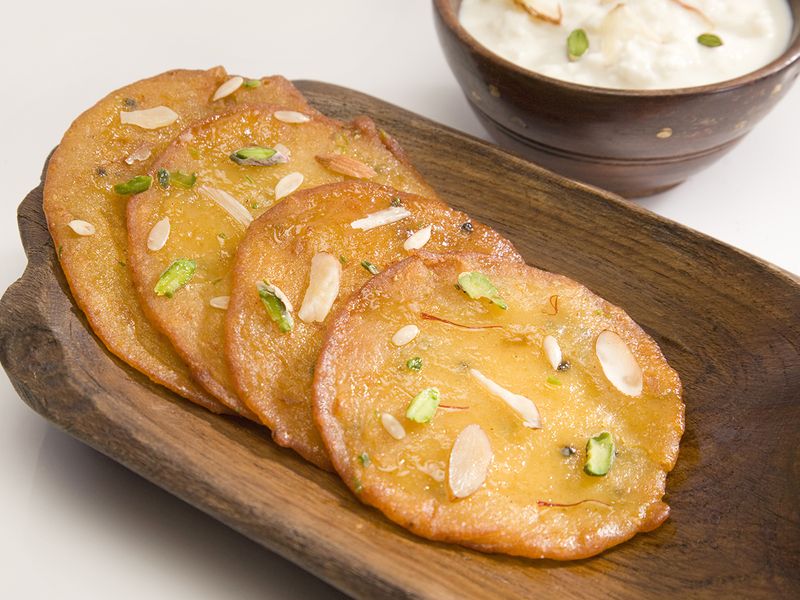

I try to keep that tradition alive and hopefully pass it on too. I will be making dahi-wadas (deep-fried fritters soaked in yoghurt, spiced with sweet, spicy and tangy chutneys, a popular type of Indian chaat); gujiya, pua or malpua (deep-fried sweet fritter) and thandai.
The day before Holi is called Holika, and it marks the beginning of the celebrations. At or after sunset, people gather at a lit pyre, throwing in food items, symbolically representing the burning away of evil deeds.
On this day, Singh makes a classic kadhi badi (a sour and spicy yoghurt-based curry with fritters) served with steamed white rice, different kinds of pakoras or fritters and fried poppadum. She added: “I miss home a lot during this colourful festival. Cooking some of the dishes I grew up eating around this festival helps me and my husband cheer up, and along with this, my son gets to eat and learn about our culinary heritage.”
While many Indian expats cook at home, others order from Indian sweet shops and restaurants to stay connected to their culinary traditions.
Jayshree Patil, a 33-years-old Indian expatriate who works as an Administrator at a software company in Dubai, fondly recalls some popular dishes she grew up eating on Holi in the western Indian city of Mumbai. She said: “I fondly recall my mother cook puran poli (sweet flatbread stuffed with a sweet lentil filling made from skinned Bengal gram or chana dal and jaggery) and fried poppadums to be offered as naivedya or offering to the deity. After which it would be served to everyone. Apart from puran poli, what I miss the most are the Holi rituals - walking around the pyre, throwing dried coconut into the fire, which signifies getting rid of the evil eye and eventually playing with colours the next day.”
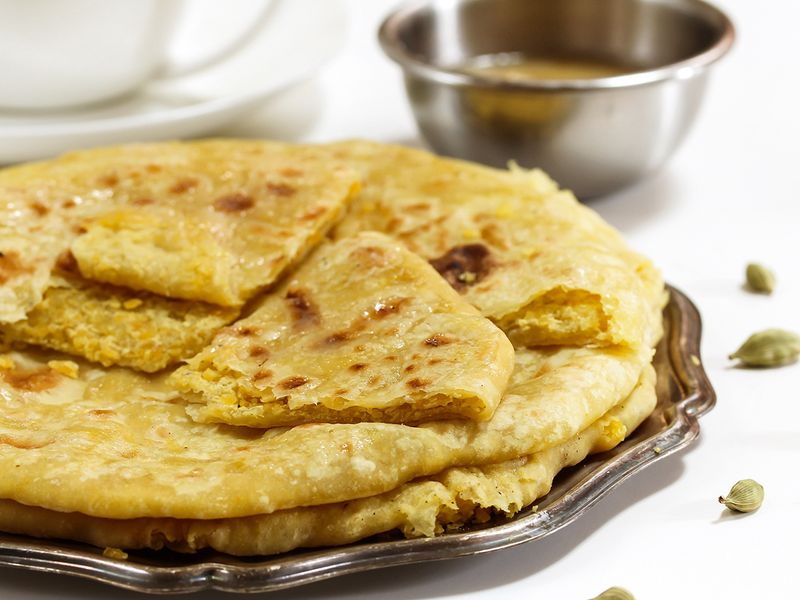

I fondly recall my mother cook puran poli (sweet flatbread stuffed with a sweet lentil filling made from skinned Bengal gram or chana dal and jaggery) and fried poppadums to be offered as naivedya
For Patil, being away from her home country during Holi is not easy, and she gets nostalgic around this period. She added: “To keep up with the festive spirits and tradition, I either order in or prepare puran poli at home. Then I invite my friends, play with colours and eat a festive meal together.”
Another Indian expatriate, Harshida Sarvaiya, who belongs to Rajkot, a city in the western Indian state of Gujarat, loves to cook for her family during Holi. For the 72-year-old homemaker based in Dubai, keeping the Holi culinary traditions alive is essential, and it starts in her kitchen. Her recipes include all the classic and traditional dishes she grew up eating, which she later learnt to cook.
Sarvaiya said: “The day before Holi, we burn or light a pyre called Holika at or after sunset. During this, we offer khajur or dried dates and dhana or coriander seeds to the fire.” Explaining Holi rituals that are unique to her hometown, she said: “In the past, mothers would observe a full-day fast and eat only at night after burning the holika. She added: “Everyone dresses in yellow colour on this day. And the next day, when we play Holi with colours, called dhuleti, we dress in white coloured attire and begin playing with colours starting early morning, until sunset.”

The day before Holi, we burn or light a pyre called Holika at or after sunset. During this, we offer khajur or dried dates and dhana or coriander seeds to the fire.”
This Holi, she wishes to prepare popular food from her state. Sarvaiya said: “On the day we burn the pyre, we make a traditional dish called lapsi, which is made from wheat flour, jaggery and a generous amount of ghee or clarified butter. We also make churma ladoo (whole wheat flour, jaggery, ghee or clarified butter, grated coconut and sesame seeds sweets) on this day. On dhuleti, we make puri or deep-fried bread, shrikhand or sweetened hung yoghurt and sabzi or savoury mixed vegetable dish."
The one dish she associates with Holi the most is gud puris or deep-fried bread sweetened with jaggery. This Holi, she plans on revisiting her childhood by cooking these traditional dishes for her family in Dubai.
The Holi sweet dish that migrated from Rajasthan to Kolkata
Nothing quite represents India’s diversity as food and festivals. There is a Holi classic dish from the western Indian state of Rajasthan that is quite popular in Kolkata. The reason is that many traders from this region’s Marwar community migrated to the Eastern princely state. They carried a classic Holi dish called Ghewar - a disc-shaped sweet made with ghee or clarified butter, refined wheat flour, sugar syrup, and flavoured with saffron and cardamom.

Bhavneet Kaur Lath, a 40-year-old Dubai-based digital marketer who belongs to the Indian state of Punjab food, makes sure to order Ghewar for Holi every year. She explained: “My Husband belongs to the Marwari community in Kolkata, and Ghewar happens to be their traditional sweet dish for Holi. It is quite time consuming to make at home, so I like to order it. However, where I come from – Punjab, which is known for its rich dairy produce, the quintessential holi dish is – dahi bhalla, a type of chaat or snack prepared by soaking fried flour balls in thick spiced and tangy dahi or yoghurt.” This year, Lath will be making a batch of dahi bhalla for her family and friends in Dubai along with a traditional Punjabi sweet dish - phirni (a rice-based pudding).

My Husband belongs to the Marwari community in Kolkata, and Ghewar happens to be their traditional sweet dish for Holi. It is quite time consuming to make at home, so I like to order it. However, where I come from – Punjab, which is known for its rich dairy produce, the quintessential holi dish is – dahi bhalla
Holi legends, myths and ancient Indian scriptures
In the Indian language Sanskrit, the word Holi means 'burning'. There are many tales about the origin of this festival. A famous story is that of the demon king called Hiranyakashyap. This tale mentioned in many Indian scriptures states that the demon king wanted everyone to worship him. However, his son, Prahalada, refused to do so. Disappointed by this, he ordered his sister, Holika, to sit inside a blazing fire putting his son on her lap to burn him down. She could resist fire because she had a boon given by a deity named Brahma.
She followed her brother’s instructions. However, when she took in Prahalad, she got burnt and died. The reason being the boon could only work if she went inside the fire alone. Good won over evil, and this marked the beginning of Holi.
Celebrated on a full moon, the date of this festival varies primarily based on the lunar calendar and marks the beginning of the spring season.



